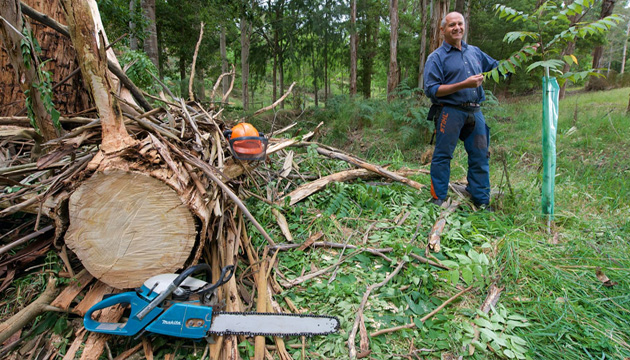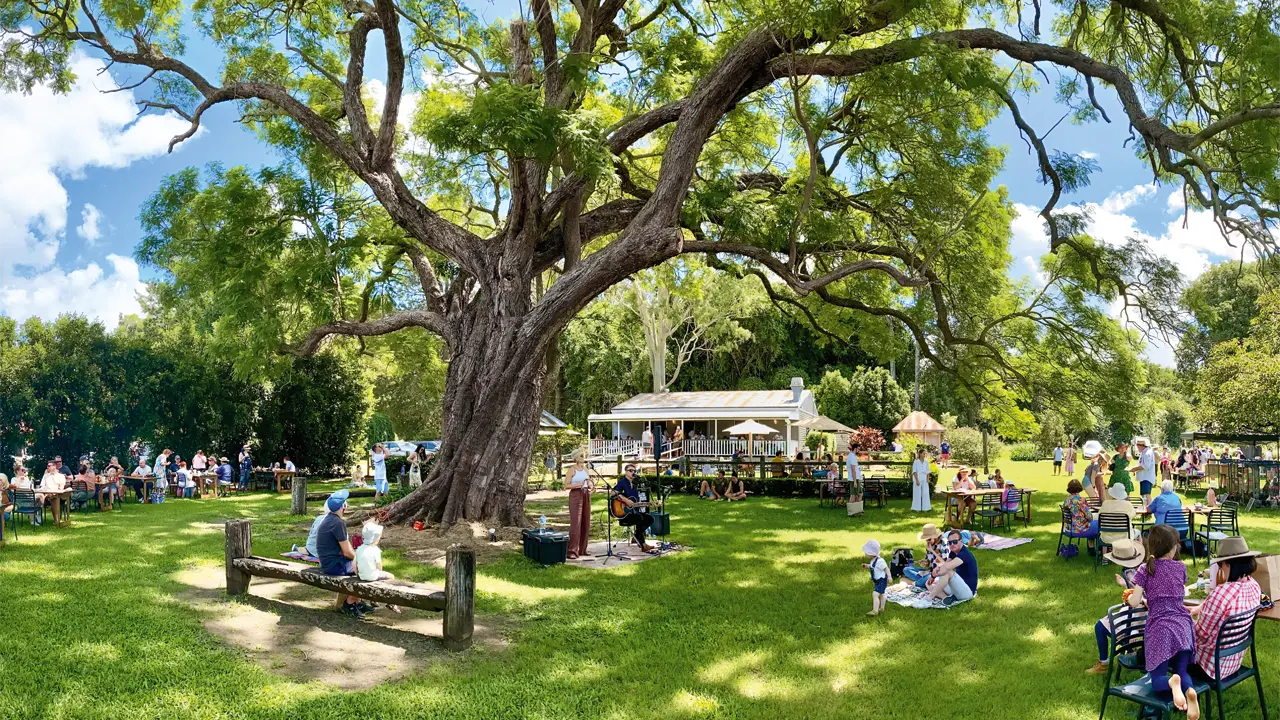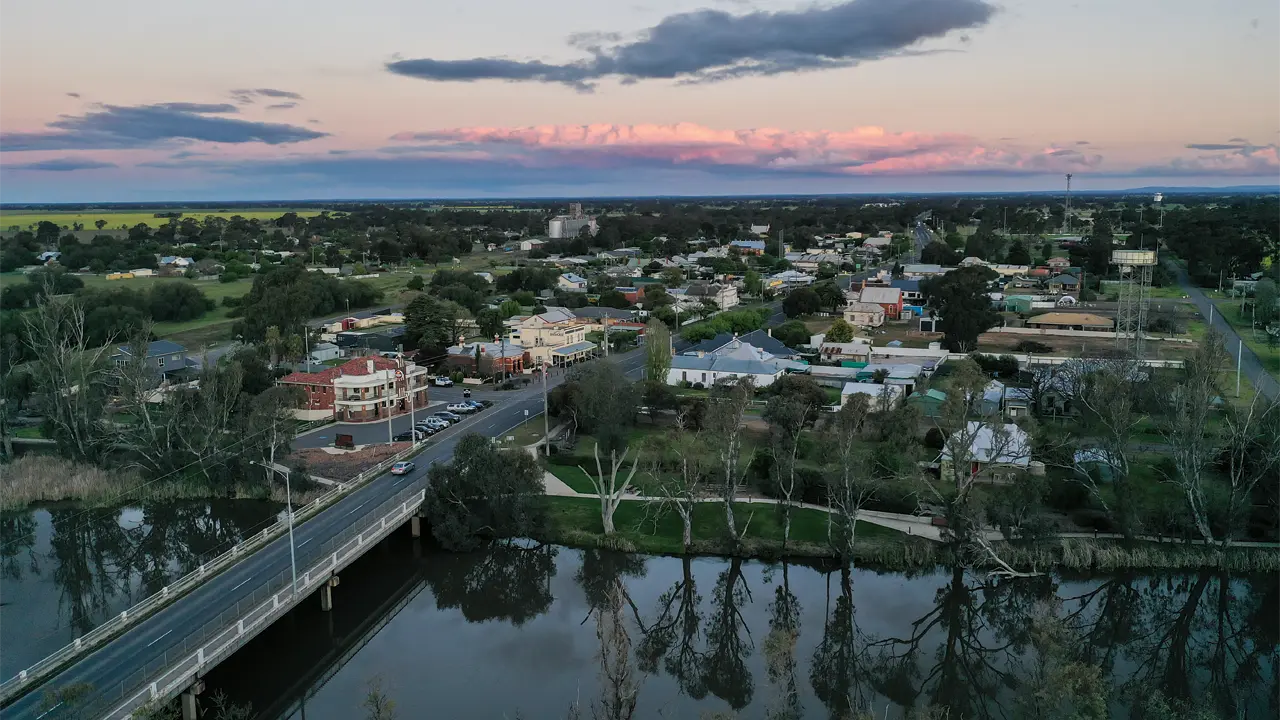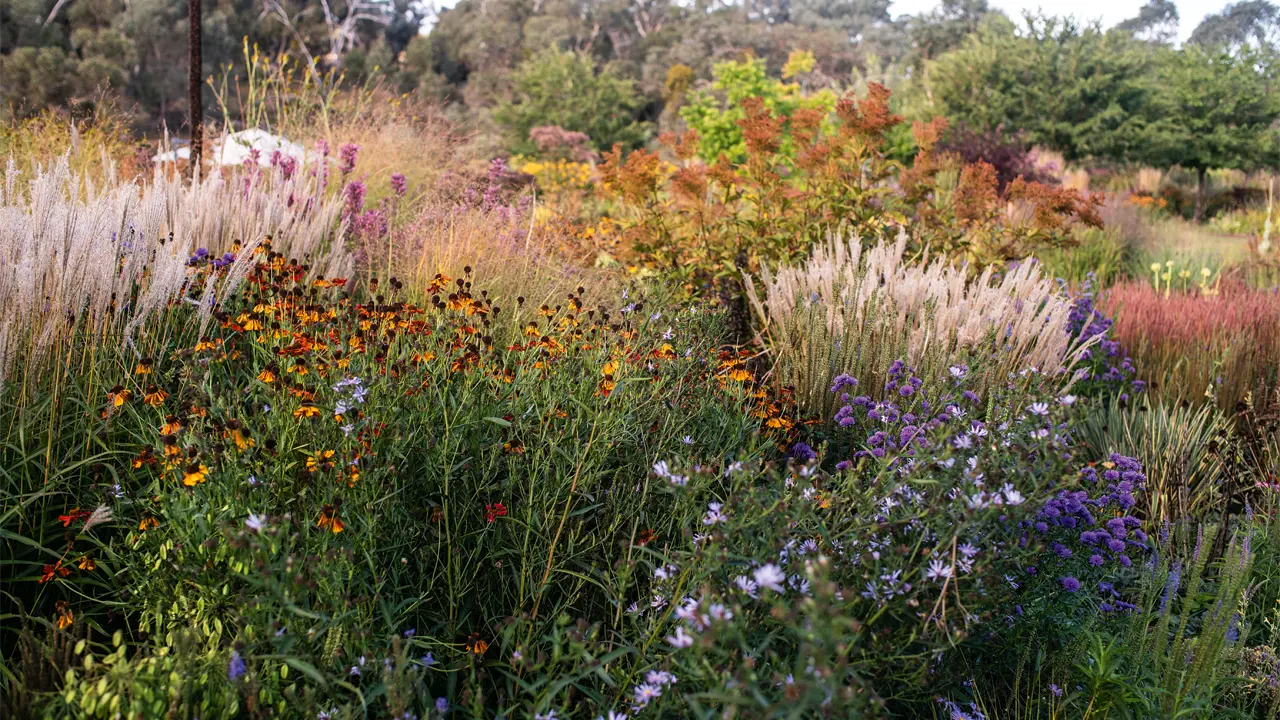Planting a wide variety of trees to support diversity, sustainability and revenue is central to the practice of agroforestry.
Story By Cormac Hanrahan
With arms fully stretched around the trunk of a 15-metre Californian redwood, it appears as if Rowan Reid is attempting to give the tree a hug. The illusion, however, is quickly broken as, having managed to pass the end of a dressmakers’ tape measure between his fingertips, he draws it around the girth of the soaring tree, pauses to read the measurement, then steps back to contemplate its significance. “Twenty-eight years ago I planted a seed. It cost me 10 cents and occasionally I pruned the tree up. Now it’s over 80 centimetres in diameter and almost ready for harvest,” Rowan says.
The redwood Rowan just measured is one of many in a stand of strong, straight trunks merging into a dense canopy above, and this stand, this mini Southern Californian forest, is on a property covered in thousands of trees – of all sorts – all of them planted by Rowan and his family.
Bambra Agroforestry Farm is located in the undulating hills of the Otway ranges, near Deans Marsh, Vic. Rowan purchased the 40-hectare run-down dairy farm in 1987, roughly the same time he graduated with a Masters in Forest Science from The University of Melbourne. After stints working in chicken sheds and with fencing contractors, he became a senior lecturer in the university’s forest science department and found himself in the unique position of being able to put theory into practice in his own backyard.
Although Rowan’s training as a forest scientist was geared towards commercial plantation and public forest management, his passion is the interweaving of forestry with agriculture, a practice known as agroforestry and broadly defined by Rowan as “farmers growing trees for purposes that are important to them”. Trees on farms, aside from sheltering stock and pasture, can be used to solve problems including erosion, salinity, and waterlogging, while simultaneously improving biodiversity, beautification, and the big clincher – increasing capital value and providing income through timber, oils, bush foods, or even flowers.
“Done right, trees don’t compete with the farm, but support it. It’s not the blue gum thing that takes over, it’s about thoughtful planting of trees to improve and support production, and possibly create income opportunities,” Rowan says.
Across Rowan’s 40ha there’s a few sheep wandering among an amazing variety of trees: European poplars, American black walnuts, English oaks, Australian silky oaks, a whole range of eucalypts, kauri pine, hoop pine, radiata pine, casuarinas, and Australian red cedars, to name but a few.
This story excerpt is from Issue #105
Outback Magazine: Apr/May 2016









